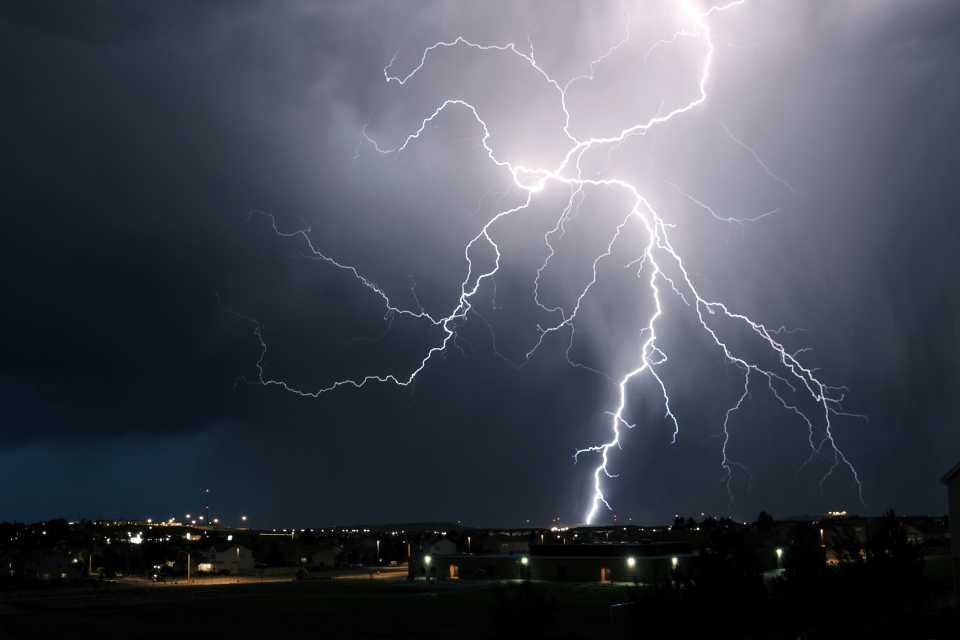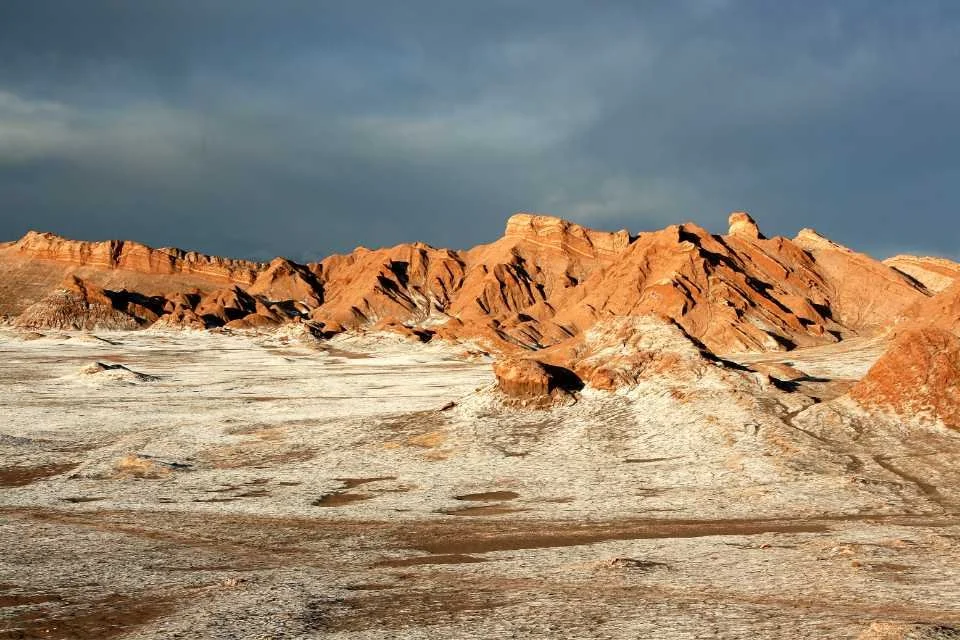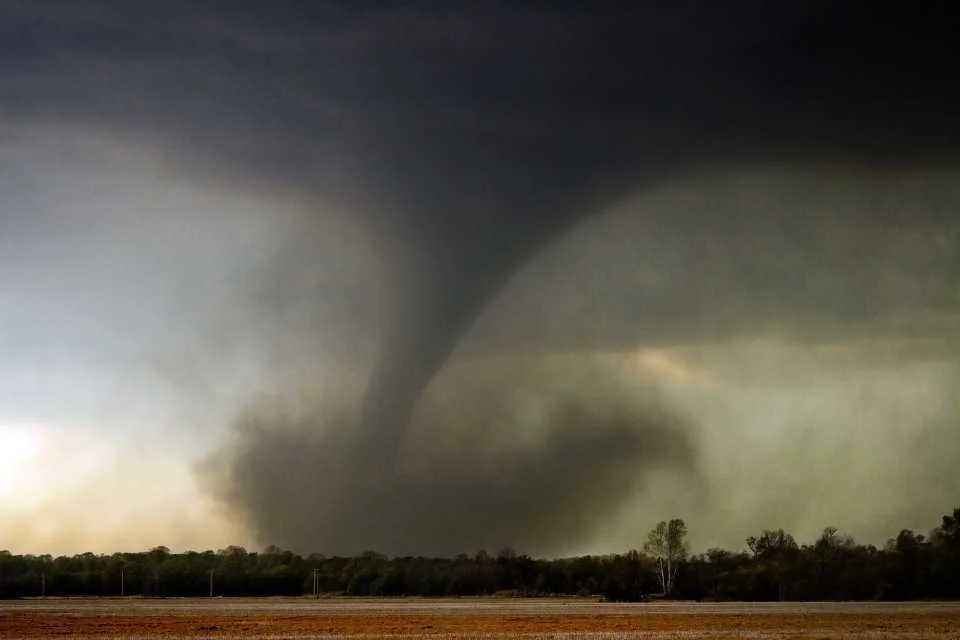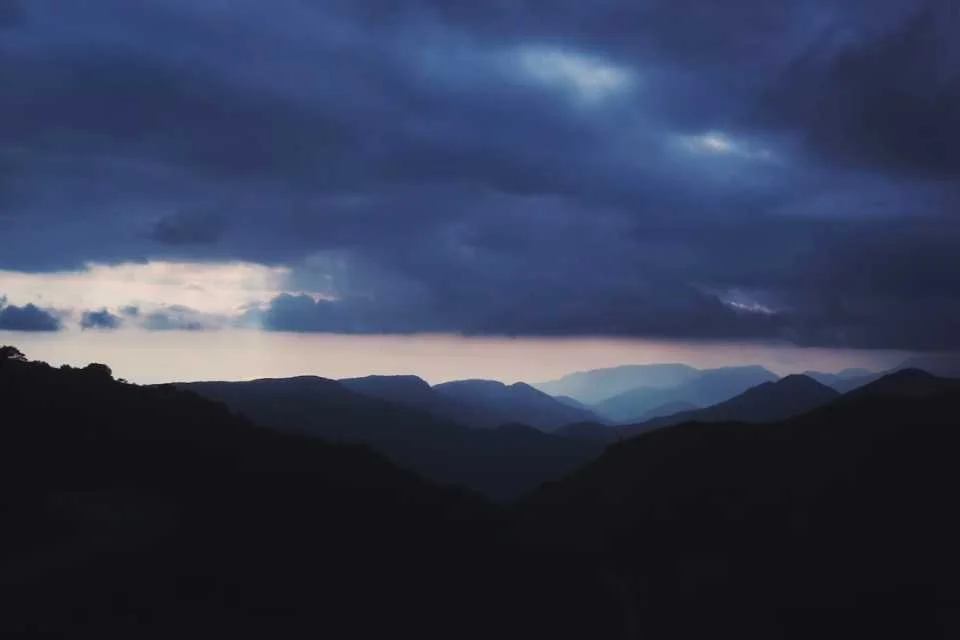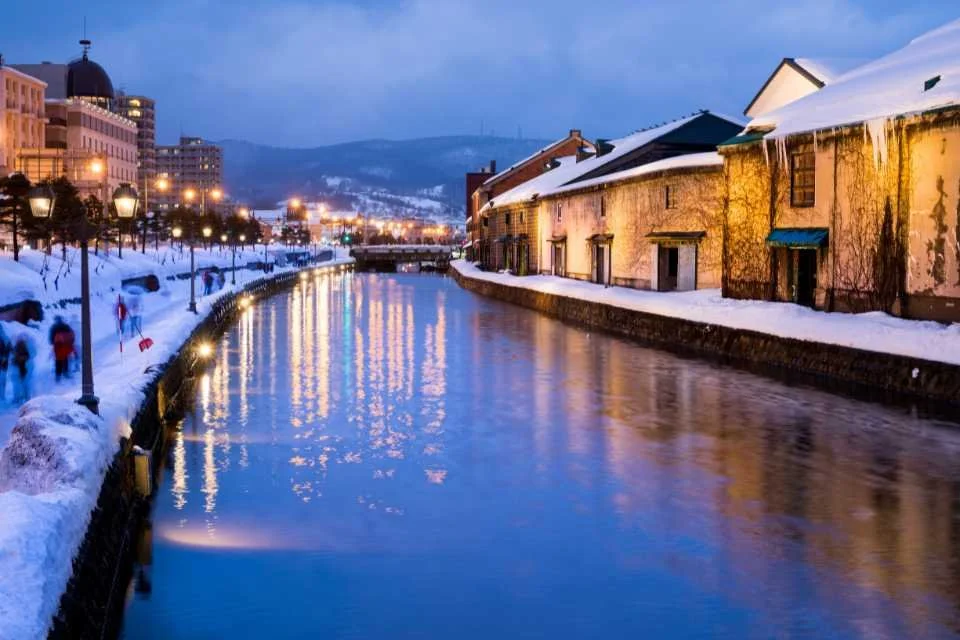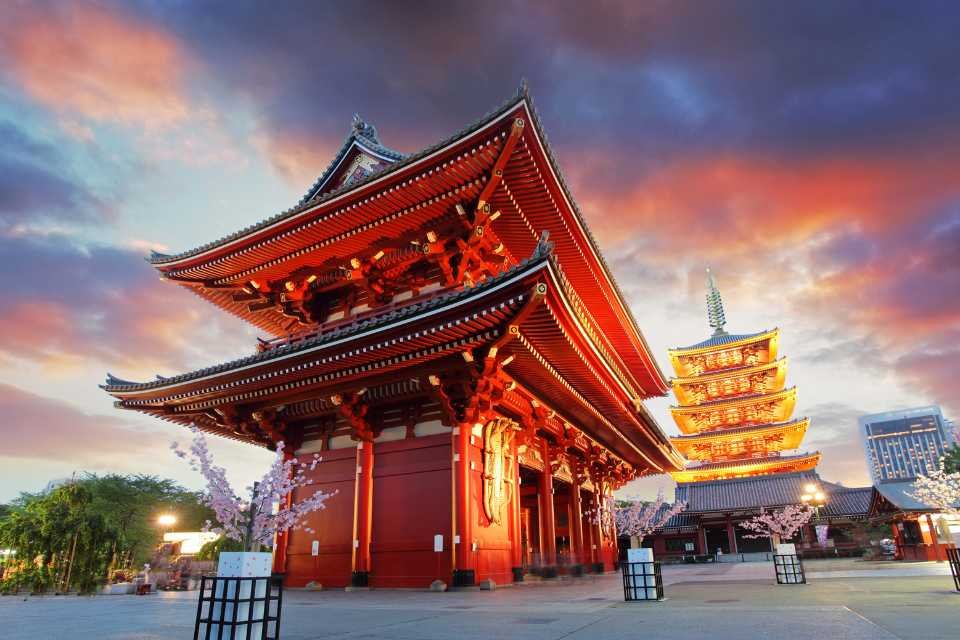12 places on earth with the most extreme weather conditions
The places on earth with the most interesting – and scary – weather conditions
Are you as fascinated by extreme and unusual weather as we are? If so, then you'll be thrilled to know we’ve collected 12 places on earth where you can experience the most interesting and extreme weather conditions.
From snow-covered volcanoes to scorching desert climates, these 12 spots will give you a glimpse into the world of extreme weather. Whether you are a weather enthusiast, an outdoor adventurer, or just looking for a unique vacation spot, this list of the 12 places on earth with the most extreme and interesting weather is sure to inspire you!
1 of 12
The Sahara Desert
The Sahara Desert is the world’s largest hot desert, covering most of North Africa. This immense expanse of sand stretches from the Atlantic Ocean in the west to the Red Sea in the east and from the Mediterranean Sea in the north to the Sahel region in the south.
The temperature in this desert can reach up to 122°F during the day and drop to as low as 41°F at night. In some areas, sandstorms are known to occur, which can be accompanied by high winds and dust. Rainfall is very rare here, but when it does rain, it can be a very intense experience.
Flash floods can occur, making the area incredibly dangerous. Despite this, there are still a few species of animals and plants that survive in the harsh environment of the Sahara Desert.
An easy way to experience the Sahara without the effort is to book a Sahara taster tour from Marrakech, Morocco. You’ll travel by camel and experience the remoteness of the desert, but you’ll still be within easy reach of creature comforts – and safety!
2 of 12
The Atacama Desert
The Atacama Desert is located in Chile and is known as one of the driest places on earth. It is the oldest desert in the world and is one of the most extreme weather environments on the planet.
The Atacama is a large plateau, surrounded by mountain ranges and volcanoes, which creates an arid climate with little to no rainfall. This makes it the perfect place to experience some of the most extreme weather conditions. During the day, temperatures can reach up to 35°C (95°F) and at night can drop to -5°C (23°F). The combination of high winds, scorching heat and freezing temperatures make this an exciting and unique place to visit.
Despite the harsh conditions, the Atacama Desert is home to some incredible wildlife, including giant cacti, lizards, snakes, foxes and more. There are also several fascinating geological formations, such as lagoons, salt flats and sand dunes. It is also known for its beautiful sunsets and starry night skies.
If you're looking for an adventure of a lifetime, the Atacama Desert is an unforgettable experience. With its dramatic landscapes and extreme weather conditions, this is definitely a place that should be on everyone's bucket list.
3 of 12
Antarctica
Antarctica is the coldest, windiest and driest continent on Earth. It's home to the South Pole and is considered one of the most extreme and interesting places to experience weather. In Antarctica, temperatures reach as low as -100°F (-73°C) in some areas, while winds reach up to 200mph (322km/h).
As if the intense cold and powerful winds weren’t enough, the Antarctic landscape is one of extreme contrasts. While much of the land is covered in a blanket of snow and ice, there are also vast areas of sand and rock that remain exposed year-round. This creates unique weather patterns such as blizzards and whiteouts, as well as some of the most spectacular sunrises and sunsets you’ll ever see.
The unique weather conditions of Antarctica make it a fascinating place to explore. From the dazzling colors of the aurora australis to the thundering roar of glaciers calving into the sea, there’s never a dull moment in this otherworldly environment. If you ever get the chance to visit Antarctica, you’ll be in for a truly once-in-a-lifetime experience.
Read next
4 of 12
The Great Plains
The Great Plains of North America is a vast region located between the Rocky Mountains and the Mississippi River. It is one of the most unique weather systems on Earth, with frequent tornadoes and violent thunderstorms. The Great Plains is also known for itsextreme temperatures, both hot and cold. During the summer months, temperatures can reach up to 110°F (43°C) and during the winter months, temperatures can dip to -40°F (-40°C).
The Great Plains is one of the best places on Earth to witness some of the most extreme weather conditions. Violent thunderstorms, dust storms, hail, tornadoes and blizzards are all common sights in the Great Plains. During the spring and summer months, the warm air in the region often creates a violent thunderstorm that can produce hail and even tornadoes. During the winter months, the region can be blanketed with snow and powerful winds can cause white-out conditions.
The Great Plains is a fascinating place to visit and experience its unique and extreme weather conditions. With its wide open spaces, frequent thunderstorms and extreme temperatures, it’s an experience unlike any other on Earth.
5 of 12
Death Valley
Death Valley is a desert valley located in Eastern California, between the Sierra Nevada and the Panamint Range mountains. It is one of the hottest places on earth, with summer temperatures often reaching up to 134°F.
Death Valley is also home to extreme weather conditions such as high winds and heavy dust storms, making it an interesting destination for those interested in extreme weather. It is also home to some of the most extreme forms of heat and dryness, making it an ideal spot for those looking to experience one of the most intense weather conditions on earth.
Death Valley is also known for its many sand dunes, salt flats, canyons, and other geologic features. It's a great place to go if you're looking for something truly unique and out of the ordinary.
6 of 12
Patagonia
Located in South America, Patagonia is a place of stunning beauty and unique weather. This region experiences some of the most extreme and interesting weather on the planet. From sunny days to snow-covered valleys, Patagonia has it all.
The strong winds that blow across Patagonia are the result of its location at the southernmost tip of South America. Here, where the Andes Mountains meet the Atlantic Ocean, a wind tunnel is formed. This wind tunnel creates gusts of up to 125 miles per hour. The unique shape of the Andes Mountains also contributes to the climate of Patagonia by creating its own rain shadow effect. The mountains block out moisture from the ocean, which results in arid and dry conditions in the valleys below.
Rainfall can be quite sporadic in Patagonia, but when it does arrive, it can be torrential. During the winter months, there can be heavy snowfall in some parts of the region. These extreme weather conditions make Patagonia a great destination for outdoor activities like skiing, hiking, and camping.
In addition to extreme and interesting weather conditions, Patagonia is home to some of the most stunning views on earth. With its snow-capped mountains, crystal-clear lakes, and vast green valleys, Patagonia is a nature lover’s paradise. It’s no wonder why so many people flock to this region each year for an unforgettable vacation experience.
7 of 12
Mawsynram
Located in the East Khasi Hills of Meghalaya, India, Mawsynram is known as the wettest place on Earth. It receives an average of 11,872 millimeters of rain annually and has an average annual rainfall of 467 inches! During the monsoon season, the town can see up to 30 feet of rain within a single month. In addition to all this rainfall, Mawsynram also experiences some of the highest levels of humidity in the world.
Not surprisingly, Mawsynram is a lush and green place with plenty of greenery throughout the year. It’s home to hundreds of species of flowers and birds and is a popular tourist destination for those looking to experience a unique environment. The town is also well known for its spectacular waterfalls, which are formed by the enormous amount of rainfall it receives every year.
If you're looking to experience some of the most extreme and interesting weather on Earth, Mawsynram is certainly worth checking out. The sheer amount of rain and humidity makes it a truly unique experience that will leave you speechless.
8 of 12
Lake Maracaibo
Located in Venezuela, Lake Maracaibo is one of the most extreme places on earth to experience weather. This massive lake stretches for an impressive 140 miles and is the largest body of water in South America.
The area around Lake Maracaibo has the highest frequency of lightning in the world, with an average of 28 lightning bolts per minute during the wet season. This incredible phenomenon is known as Catatumbo Lightning, and is caused by the warm Caribbean air colliding with cold Andean winds.
This phenomenon has been documented since pre-Colombian times, but it has been increasing in intensity in recent years. Scientists believe this is due to deforestation and global warming, but it has yet to be confirmed.
The lake's extreme weather conditions also include high winds and torrential rains. The average wind speed in the area reaches up to 25 knots, making it a hotspot for extreme sports enthusiasts.
Despite the lake’s intense weather, it still remains a popular tourist attraction. Boating and fishing trips can be taken out on the lake, and visitors are also drawn to the local wildlife and unique scenery.
Overall, Lake Maracaibo is an incredible place to witness extreme weather conditions that occur naturally in nature. From powerful storms to beautiful sunsets, Lake Maracaibo offers a spectacular glimpse into some of the most extreme weather on the planet.
9 of 12
The Andes
The Andes Mountains are the longest mountain range in the world and are located in South America. These rugged and majestic mountains span a whopping 7,000 km from Venezuela to the southern tip of Chile and Argentina. With heights ranging from 3,000 to 6,000 m, these mountains are home to some of the most extreme weather conditions on earth.
The climate in the Andes varies drastically due to the large range of elevation. Areas close to sea level experience tropical climates, while higher elevations experience temperate climates with snowfall. The temperature can also vary greatly between day and night, with daytime temperatures reaching up to 30°C and night time temperatures dropping to below freezing.
One of the most extreme weather phenomena in the Andes is known as the 'zonda' wind. This strong, dry wind is capable of reaching speeds of up to 140 km/h and can whip up dust storms that can last for days. The zonda wind is especially common in the provinces of San Juan and Mendoza in Argentina.
The Andes are also prone to severe thunderstorms and hail, with some areas seeing over 400 thunderstorm days per year. One of the most extreme examples of this is the Aricoma River valley in Peru, which has one of the highest lightning rates in the world at around 300 lightning flashes per square kilometer per year.
Overall, the Andes offer some of the most extreme and interesting weather conditions in the world. From dry desert winds to raging thunderstorms, the Andes provide an unforgettable experience for any adventurous traveller.
10 of 12
Utqiagvik, Alaska
Located at the northernmost tip of Alaska, Utqiagvik (formerly known as Barrow) is the perfect place to experience some of the world's most extreme weather conditions. The city is known for its extremely cold temperatures, with average lows reaching below -20 degrees Fahrenheit and winter temperatures dropping below -30 degrees. With temperatures like these, it’s no surprise that Utqiagvik experiences high levels of snowfall, averaging over 65 inches annually. Not only that, but strong Arctic winds whip through the city, often making the air feel much colder than it actually is.
The city also has a unique day and night cycle that residents have to adjust to. The sun rises and sets at different times during different months of the year. In December, the sun doesn’t rise until 10:00 am and sets around 2:00 pm, leaving the city in darkness for most of the day.
The unique weather conditions of Utqiagvik make it an interesting place to visit if you’re looking for extreme temperatures and the beauty of a city blanketed in snow. Even if you don’t plan on visiting, it’s worth taking the time to learn more about this fascinating city and the weather conditions they experience.
11 of 12
Hokkaido, Japan
Hokkaido, Japan is known for its extreme weather conditions and is an excellent destination for those looking to experience some of the most interesting and extreme weather in the world. Located in the northernmost part of Japan, Hokkaido’s climate is characterized by cold winters, with temperatures as low as -30°C, and mild summers, with temperatures averaging 18-20°C. In addition to cold temperatures, Hokkaido is known for its heavy snowfall, which can last from October through May. On the other hand, summertime temperatures can sometimes reach up to 30°C in July and August.
One of the most extreme weather events that occurs in Hokkaido is the winter monsoon, or “Soryu”. This winter storm usually occurs between December and February and produces strong winds and heavy snowfall. In addition to snow, there can be thunderstorms during this period, along with heavy rainfall and freezing rain.
Hokkaido is also home to some of the world’s best skiing locations, thanks to its heavy snowfall. Whether you’re a beginner or an expert skier, there’s something for everyone on Hokkaido’s slopes. During winter months, visitors can enjoy skiing at resorts such as Niseko, Furano and Tomamu.
Visitors to Hokkaido should also take advantage of the beautiful scenery that the island has to offer. From mountain peaks to lakeside villages, Hokkaido is a haven for outdoor enthusiasts and nature lovers alike. During summer months, visitors can also enjoy activities such as fishing, kayaking and cycling.
Hokkaido is an excellent destination for those looking to experience extreme weather conditions and unique landscapes. From its cold winters to its summer storms, Hokkaido has it all.
12 of 12
Mount Washington
Located in the White Mountains of New Hampshire, Mount Washington is known for having some of the most extreme weather conditions in the world. At the summit of the mountain, temperatures can reach as low as -43°F and winds can exceed 200 mph. The highest wind speed ever recorded on the mountain was 231 mph in 1934. Due to its elevation, snowfall on Mount Washington is common throughout the year, with a yearly average of over 300 inches. The coldest temperature ever recorded on the mountain was -47°F in January 1934.
Due to its extreme weather conditions, Mount Washington is a popular destination for adventurers and thrill seekers looking for a challenge. Visitors can hike up the mountain or take a scenic drive via the historic Cog Railway that has been in operation since 1869. In addition to hiking, visitors can also enjoy activities such as skiing and snowshoeing during the winter months.
Although Mount Washington’s extreme weather can be dangerous, it offers breathtaking views of the White Mountains and the surrounding area. From the summit of the mountain, visitors can enjoy spectacular views of New Hampshire and beyond, including Vermont and Canada on a clear day.
Whether you’re looking for an adrenaline-filled adventure or just want to take in some incredible views, Mount Washington is an ideal destination for experiencing some of the most extreme and interesting weather conditions on earth.

